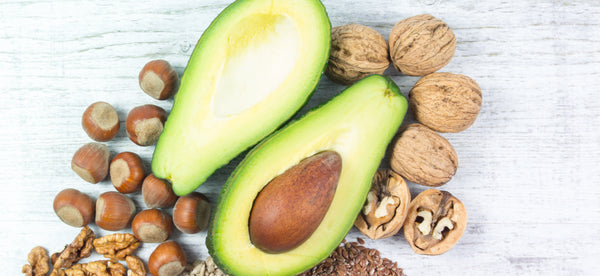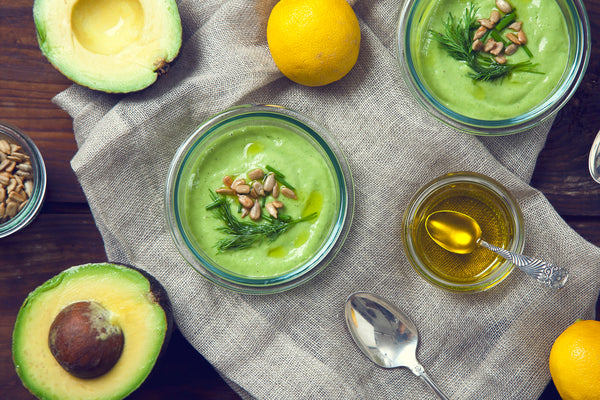


By Paulina Kajankova
Our skin is the largest organ and the most hardworking one, yet it does not get enough credit for its fascinating abilities. To start with, our skin acts as a protective barrier, regulates our body temperature and sends information through a network of nerve endings. How incredible is that? It might surprise you to know that our skin holds everything together, yet we often neglect to think of it as an important organ, protect it or give it much importance. For these reasons and more, it is vital that we educate ourselves about our skin and its functions. Skin effects your overall health and well-being, not to mention your self-esteem. It is certainly deserving of special attention and care.
You might already know that skin is complex and greatly affected by our lifestyles. By understanding how skin works, you too can decode its complexity. Every day our skin absorbs and reacts to what we eat, how we feel and especially by what products we feed it. The products you choose to put on your skin get absorbed into your body and might end up in your bloodstream. In fact, one of our skin's natural functions is absorption. First, let’s learn about the three layers.
“The suit of armor “ has three layers. Each plays an important role in keeping our bodies happy and healthy. The three layers are Epidermis, Dermis and Hypodermis.
EPIDERMIS is the top layer of your skin that you can see. As the skin's outermost protective barrier, the epidermis is the most crucial to overall health and functioning because it constantly renews and regenerates itself. This is where our hard working old and dead skin cells end up. Our epidermis is constantly making new skin cells that rise to the top, replacing the old ones. However, when too many cells try to shed at once, it can cause a buildup on the skin, resulting in clogged pores which can lead to breakouts, flaky skin and an overall dull appearance. Gentle exfoliation is the best way to remove these dead, dull surface skin cells to reveal energized, smoother, more radiant skin.
Epidermis also makes melanin. This is the substance that gives our skin color and protects us from the sun. The more time you spend in the sun the more melanin you make. It is absolutely vital that we help protect our skin and come to the aid of melanin by using sun protection. Although your skin might seem invincible in your 20s, this is the best age to start thinking about using SPF products on a regular basis. In order to help prevent cosmetic signs of aging and skin cancer, Dr. Amy Perlmutter, a board-certified dermatologist in New York, suggests getting into a sunscreen routine early in your 20s.
In your teens your collagen and elastic happily bounce back at a fast pace. This is the age during when your skin is plump and your cell turnover is at its optimal level. Dr. Amy Perlmutter informs us: “The natural aging process begins mid to late 20s when collagen production starts to decrease. As collagen production slowly declines in our 30s, thinner skin often first becomes noticeable around the delicate skin of the eyes. Fine lines may start to develop, and the skin can become drier due to diminished functioning of the sweat and oil glands. Skin cell turnover also slows leading to the common complaint of 'dull appearing skin'.”
DERMIS is your next layer, located right under the epidermis. This is the layer that contains blood vessels, nerve endings, oil and sweat glands. Nerve endings work with your brain and nervous system by sending them messages of sensations. As a result, our skin and our brain can sense pleasure or danger. The power of touch, such as a massage, has a great impact on our well-being as a result of those very nerve endings. The dermis also contains collagen and elastin, two proteins necessary for skin health because they supply energy and nutrition to the epidermis. Collagen is a mesh-like component of the dermis that gives the skin strength and flexibility. Elastin, a coil-like protein, contributes to the springy (or elastic) nature of skin, helping it return to its original shape after being stretched.
In your teens your collagen and elastic happily bounce back at a fast pace. This is the age when your skin is plump and your cell turnover is at its optimal level. Dr. Amy Perlmutter informs us: “The natural aging process begins mid to late 20s when collagen production starts to decrease. As collagen production slowly declines in our 30s, thinner skin often first becomes noticeable around the delicate skin of the eyes. Fine lines may start to develop, and the skin can become drier due to diminished functioning of the sweat and oil glands. Skin cell turnover also slows, leading to the common complaint of 'dull appearing skin'.”
The HYPODERMIS, the deepest layer, is made up of sweat glands, fat and connective tissues where many of the body's hormones are produced. The Hypodermis, sometimes called the Subcutaneous Fat layer, functions like padding and insulation for the body. It conserves body heat and absorbs shock to protect our vital internal organs. Dr. Amy Perlmutter says, “ In your 40s estrogen levels decline and oil production decreases, the skin may appear to lose its glow and fine lines become more apparent. Lifestyle choices such as regular exercise, adequate sleep, and a healthy diet contribute to healthy skin. In your 50s and 60s the skins elasticity dramatically declines and the skin also becomes drier so the focus should be on skin hydration and collagen stimulation but also keeping in mind skin cell turnover to maintain brighter tone and texture.”
In addition to the three layers, our skin performs Six Vital Functions, without which our body would not be able to work properly.
1. PROTECTION
Our skin is the first line of defense against harmful pollutants, toxins and radiation. Its remarkable ability to recognize and protect us against infections and harmful substances alone is enough to make us love our skin that much more!
2. ABSORPTION
There are thousands of pores on the surface of our skin. By absorbing water, oxygen and vitamins, our skin is able to get moisturized and nourished. This is a great reason to nourish it with non-toxic, nutrient-rich ingredients.
3. EXCRETION
The excretion function acts as a waste removal system. Unnecessary toxins get released through the sweat glands and pores.
4. SECRETION
Secretion is just as important. Our sebaceous glands secrete a substance known as sebum. It is a mixture of oils that helps lubricate and waterproof our skin, keeping it soft and supple. The secreted layer of sebum is also known as acid mantle. Its job is to protect us from harm.
5. REGULATION
Skin regulates the body’s temperature on the Hyperdermis or Subcutaneous Fat layer. Regulation of temperature happens by sweating. When the sweat on the skin evaporates it gives off heat and in turn cools the body. When we are cold, we start to shiver and get goosebumps, the contraction of muscles releases energy and in turn warms the body.
6. SENSATION
Sensation is vital for helping our brain translate what is happening to our body on the outside. The skin transports stimuli to the brand with millions of nerve endings. This helps us detect sensations, such as pressure, stinging, heat, cold and any kind of pain.
Healthy skin is central to overall health and well-being. Remember, healthy skin not only improves the way you look on the outside, but it also enhances the way your body functions on the inside. When you understand your body, you gain the power of knowledge. Gaining beautiful skin is just the bonus!
Paulina Kajankova is a seasoned beauty and wellness editor, Founder of the Cultivated Gazette, former editor at Organic Spa Magazine, Insider's Guide to Spas and brand consultant for various lifestyle brands. She writes about beauty, wellness and culture.
 NUTRITION
NUTRITION
 RECIPES: VEGAN OTHERS
RECIPES: VEGAN OTHERS
 NUTRITION
NUTRITION
Sign up today to receive weekly Beauty, Nutrition and Lifestyle tips, exclusive offers, and 10% off your first purchase.
Our beauty and wellness brand offers support, services and products to help you become WELL WITHIN your skin, mind and body.
Sign up today and receive your special Friends and Family 20% off your first purchase, valid until May 31, 2017.
Stay Ever Well,
Lynne + Renee
Co-founders
Thank you for signing up today to receive weekly Beauty, Nutrition and Lifestyle tips, exclusive offers and your special Friends and Family 20% off your first purchase, valid until May 31, 2017.
Stay Ever Well,
Lynne + Renee
Sign up today to receive weekly Beauty, Nutrition and Lifestyle tips, exclusive offers, and 10% off your first purchase.
Leave a comment
Comments will be reviewed prior to posting.